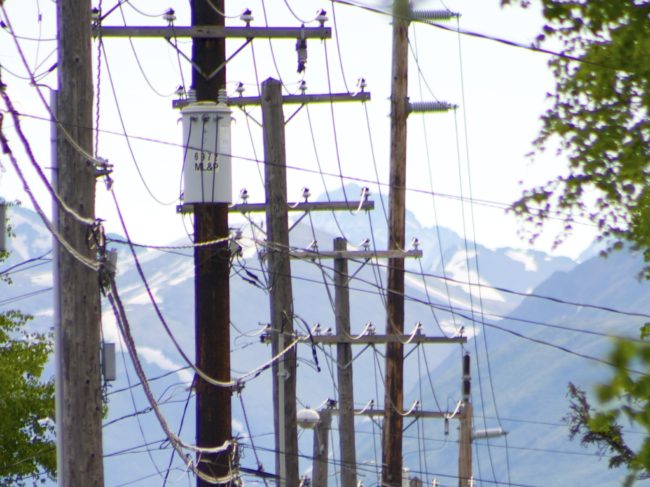
When Chris Rose makes tea in his downtown Anchorage apartment, he uses an electric stove to boil the water — pretty simple stuff. But Rose, who is the executive director of the Renewable Energy Alaska Project, knows how the electricity got to his stove is anything but simple.
“There is a backstory to this whole miracle that we call electricity that we use all the time in our lives but often just take for granted, because all we really want is the light to go on when we flip the switch,” Rose said.
That backstory is especially messy in Alaska. There are six power companies in the Railbelt — the region stretching from Fairbanks to Homer. That’s a lot of utilities for a relatively small population.
Now, for the first time in years, the state is seriously talking about putting a kind of referee in charge of how electricity moves from point A to point B. That could lower Alaskans’ electric bills. The Railbelt’s power companies are working on making this happen, but they’re also nervous about handing over the keys to just anyone.
And in the past, the companies haven’t worked together very well. Rose says that could mean Alaskans are paying more for electricity than they should.
“The utilities collectively have spent more than $1.5 billion on new, mostly natural gas generation over the last five years in the Railbelt,” said Rose. “Some critics would say we didn’t necessarily need all of that had we had regional planning.”
The Regulatory Commission of Alaska keeps tabs on the state’s electric system. Chairman Bob Pickett explained the Railbelt’s grid was set up decades ago, when Alaska’s population was smaller and more spread out. Back then, it made sense for each town to have their own power company.
“When you look at it historically, it’s not really surprising that it happened that way,” said Pickett. “If you were starting from scratch today, you would probably have a different structure.”
In a June 2015 letter, the Commission told Alaska lawmakers the Railbelt power grid needs reform — and maybe a kind of supervisor. That person, or really, a group of people, would look at the whole grid and make sure electricity moves around the region efficiently. Paul Hines, associate professor of electrical engineering at the University of Vermont, says some version of this is pretty common in the rest of the United States.
“Some coordination is definitely a good idea because electricity is one of those things where you’ve got to balance everything within the system at every second of every day,” Hines said. “So that balancing activity for the system as a whole is very important.”
Regional planning has taken on new urgency because Alaska needs new transmission lines, which will cost hundreds of millions of dollars at a time when the state doesn’t have much extra cash to pay for it. So much of the cost could be borne by Alaskans on their electricity bills.
For now, the state is letting the utilities try to work things out themselves. And at least two of them, Chugach Electric Association Inc. and Anchorage Municipal Light & Power, told the Regulatory Commission of Alaska last week they could team up within months, and then expand the partnership to other utilities soon after.
“A year, I think, is really optimistic, it might take us two years, but I really do think that we can pull this together in pretty short order,” said Chugach Electric CEO Lee Thibert.
But some the Railbelt’s power companies aren’t thrilled about a new group of people looking over their shoulders, a group that could include renewable energy advocates like Rose. Rose thinks that a grid overseer could help independent renewable energy producers get electricity on the grid for less money than they do today.
However, Fairbanks-based Golden Valley Electric President Cory Borgeson said he isn’t comfortable rushing into a new way of doing things.
“I called it a legacy project,” said Borgeson. “You make a mistake, we are going to be living with it for a very long time and there could be very big dollars at stake.”
One thing that might take some time is that the companies need to hammer out how each gets paid for the electricity sent in to another company’s territory. If all six companies can’t settle this issue themselves, the state might have to step in.
